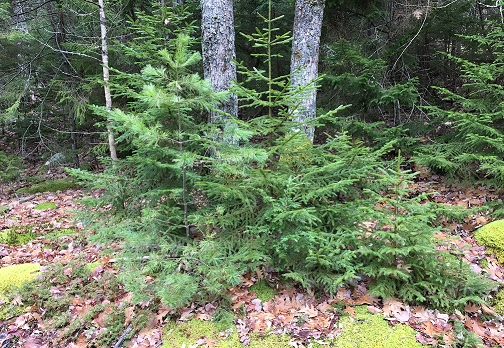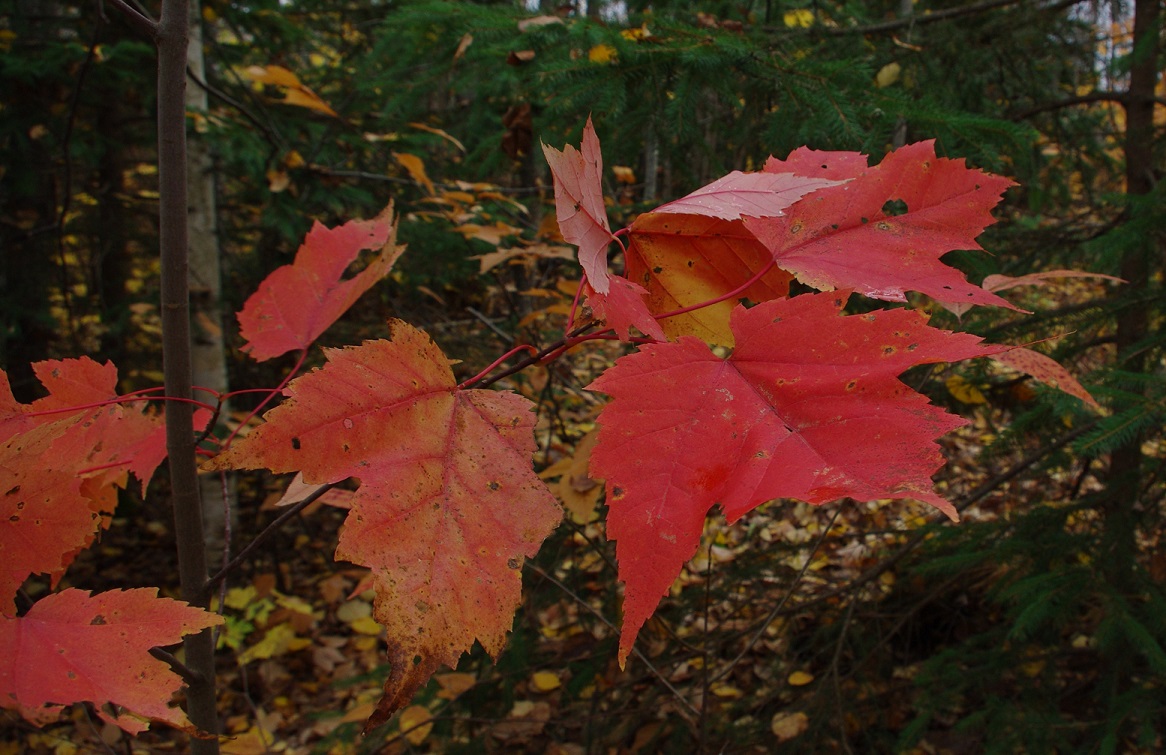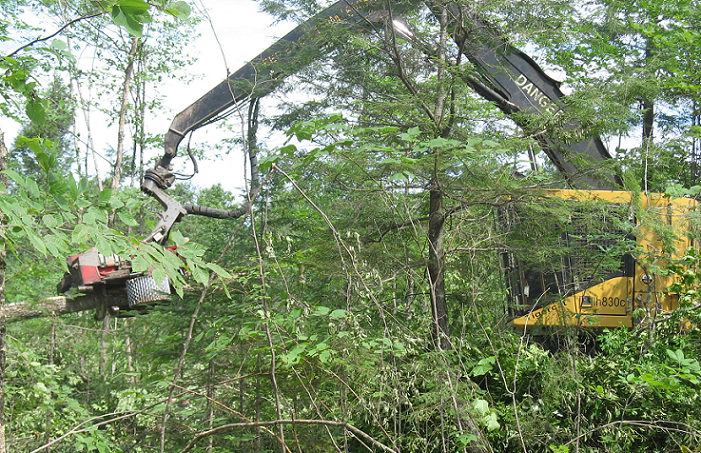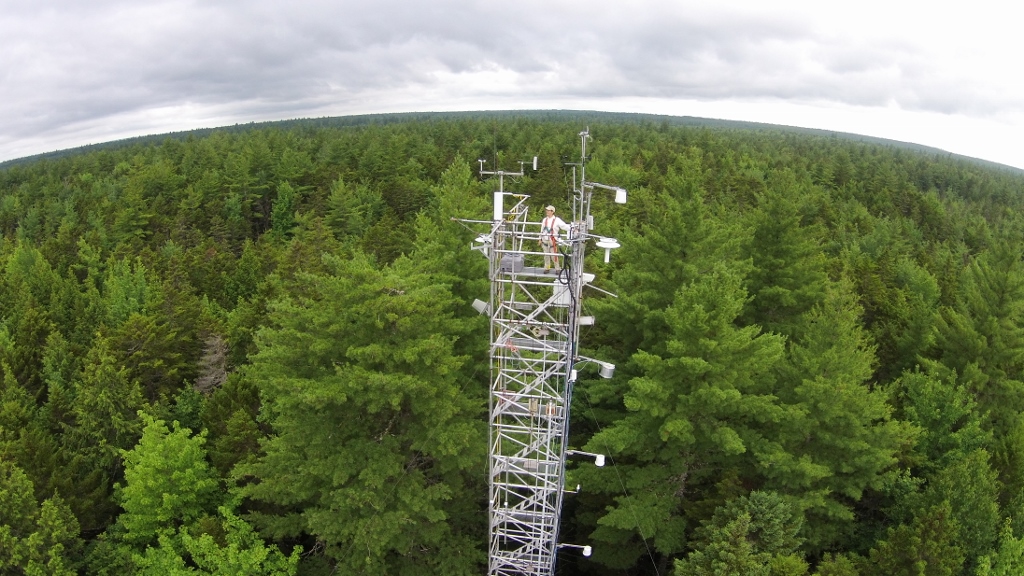Forest Climate and Carbon FAQs
FAQs with Related Resource Links
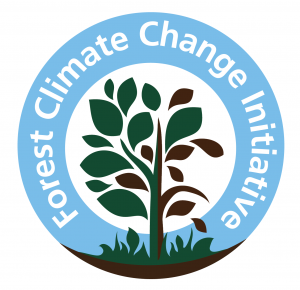 Why are Maine’s forests important to the state’s carbon budget?
Why are Maine’s forests important to the state’s carbon budget?
- Approximately 89% of Maine is forested
- Forests accounts for the vast majority of carbon uptake and storage in the state
- Forest carbon cycle is primarily driven by trees taking up carbon from the atmosphere via photosynthesis and storing carbon as biomass
- Carbon is also incorporated into the soil and long-term wood products like lumber
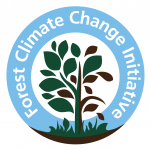 What do you see as the potential increase in invasive threats to our forests as the climate warms?
What do you see as the potential increase in invasive threats to our forests as the climate warms?
- Winter temperatures are generally an effective barrier for northward expansion of some invasive organisms. However, warmer winters are now allowing range expansion of key invasive threats like hemlock wooly adelgid.
- In contrast, in the period in which emerald ash borer has called North America home, cold winter temperatures normally experienced in Maine have not impeded its establishment or ability to cause a high rate of mortality in ash. Although a species like this may eventually shift to a shorter generation time, it is already a significant threat in current climate conditions, and cold historically experienced in ME would be nothing more than a speed bump in population growth. If climate is suitable for ash, it is suitable for EAB.
- While climate change may not be a direct cause of its expansion, the solutions to managing EAB and climate change have a lot in common: increasing forest resiliency. Check this out: https://foreststewardsguild.org/wp-content/uploads/2020/07/Ten-Recommendations-for-Managing-Ash.pdf
- Impacts from temperature-limited invasive species like hemlock woolly adelgid, balsam woolly adelgid, red pine scale, spotted lanternfly, and browntail moth will increase and accelerate as temperatures rise.
- In addition, species native to the US will be impacted by changing climates. These include examples like increases in the number of generations native bark beetles, such as eastern larch beetle, complete in a year (such as has been documented in Minnesota, this could also happen with similar species, such as spruce beetle) leading to more damage from a native species, and range expansion of pests native to areas south of Maine (such as southern pine beetle) leading to additional stresses on forests.
- Warming climate could also lead to reduced damage from some native stressors, such as spruce budworm (due to increased energy consumption of larvae in diapause). This will require better monitoring.
 How can climate change modeling and big data help land management decisions?
How can climate change modeling and big data help land management decisions?
- Digital soils and wetland areas mapping
- Remote sensing technologies like LiDAR
- Predict species change/forest composition
- Forest carbon markets
- Forest cover and fragmentation
- Forest health monitoring
- Effects on tree regeneration and growth
- Spatial mapping and forecasting of climate effects (precipitation, variability)
 How can climate change modeling and big data help land management decisions?
How can climate change modeling and big data help land management decisions?
- Digital soils and wetland areas mapping
- Remote sensing technologies like LiDAR
- Predict species change/forest composition
- Forest carbon markets
- Forest cover and fragmentation
- Forest health monitoring
- Effects on tree regeneration and growth
- Spatial mapping and forecasting of climate effects (precipitation, variability)
 What is the projected geographic change in species composition by decade in the future?
What is the projected geographic change in species composition by decade in the future?
The best resource for this currently is the US Forest Service’s Tree Climate Atlas, which is available here. This tool provides spatial projections across future climate change scenarios. Decadal maps may be less relevant as there is high uncertainty in any climate change scenario and lack of strong empirical knowledge on how existing individual species may respond to novel climate conditions.
 What is the potential impact of climate change specific to Maine’s forests? Specifically:
What is the potential impact of climate change specific to Maine’s forests? Specifically:
- Forest management and operations
- Forest fires
- Water quantity and quality, particularly during and after harvesting
- Spruce-fir suitable habitat
- Rare plants
- Habitat for wildlife
- Land use and conservation
- Forest vulnerability
- Recreation and human behavior (parks, ski/snowmobile industry, ticks, ecotourism)
 How do we estimate forest greenhouse gas (GHG) mitigation potential?
How do we estimate forest greenhouse gas (GHG) mitigation potential?
- Define baseline or business as usual pathway
- Establish list of acceptable or appropriate mitigation practices
- Estimate cost and effectiveness of implementing practices
 How do forest growth and harvesting impact climate?
How do forest growth and harvesting impact climate?
- Improve carbon stock and sequestration
- Provide durable and long-term storage as wood products
- Can be used for biomass-based energy, which offsets energy from non-renewables
- Increase forest resilience to potential disturbances like spruce budworm or fire
 What attributes of an old growth forest (or nearly so) might be important to climate change mitigation that can’t be reproduced in a managed forest? Or more specifically, what roles do deep forest soils, fungi colonies, and other slow developing forest characteristics and systems play in climate mitigation?
What attributes of an old growth forest (or nearly so) might be important to climate change mitigation that can’t be reproduced in a managed forest? Or more specifically, what roles do deep forest soils, fungi colonies, and other slow developing forest characteristics and systems play in climate mitigation?
- This is a topic that needs further attention, particularly in Maine.
- Late-successional forests often have high structural diversity, large soil and coarse wood debris carbon pools, and a variety of microhabitats.
- Deep forest soils develop on a millennial timescale, not on the typical scale of old growth. Forest floors that are part of the soil, however, do accumulate along with stand age and complexity.
- Any effective landscape mitigation strategy needs to ensure a diversity of forest habits present. Maine’s Ecological Reserve Network effectively ensures this for the state as the climate changes; continuing to identify highly important ecological or sensitive sites will remain critical.
What role does the production of biochar play in forest and invasive species management?
- Biochar is an important and emerging area of research. It is important to recognize that biochar is not a single material but a wide range of potential sources and compositions, and only benefits the atmosphere if it is not burned.
- If a market can develop in Maine for biochar in agriculture and possibly forestry, then this could offer a market for invasive species management strategies that are otherwise not economical.
- While other parts of the world have active biochar markets, there is no such market in northern New England at this time.
- To our understanding, research on biochar and its influence on forests is just starting to emerge in Maine, but primarily based on laboratory conditions. Field-based assessments of biochar will be a clear next step for this research.
How do the climate change amelioration effects differ between open fields and forests in Maine?
- Open fields and natural forests have much different microclimates due to canopy cover provided by trees.
- Open fields offer opportunities for afforestation or the replanting of trees, which always relies on matching the best species for the site and following effective guidelines for seedling establishment.
- For already established forests, effective management will likely focus on ensuring high tree vigor/health and ensuring the most resilient species are favored, while also managing for both structural and species diversity.
- If there is no land use change, then the big difference seems to be that forests have significant potential for additional carbon storage on the stump and in durable products, where fields that stay open fields (crops, forage, pasture) can gain a little soil C, but not much in Maine given their extent compared to forests.
- Conifer forests absorb more incoming radiation (albedo) than a more reflective field, but that is likely overcome significantly by scale of carbon sequestration.

Have a forest climate question for our team? Submit it to crsf@maine.edu

